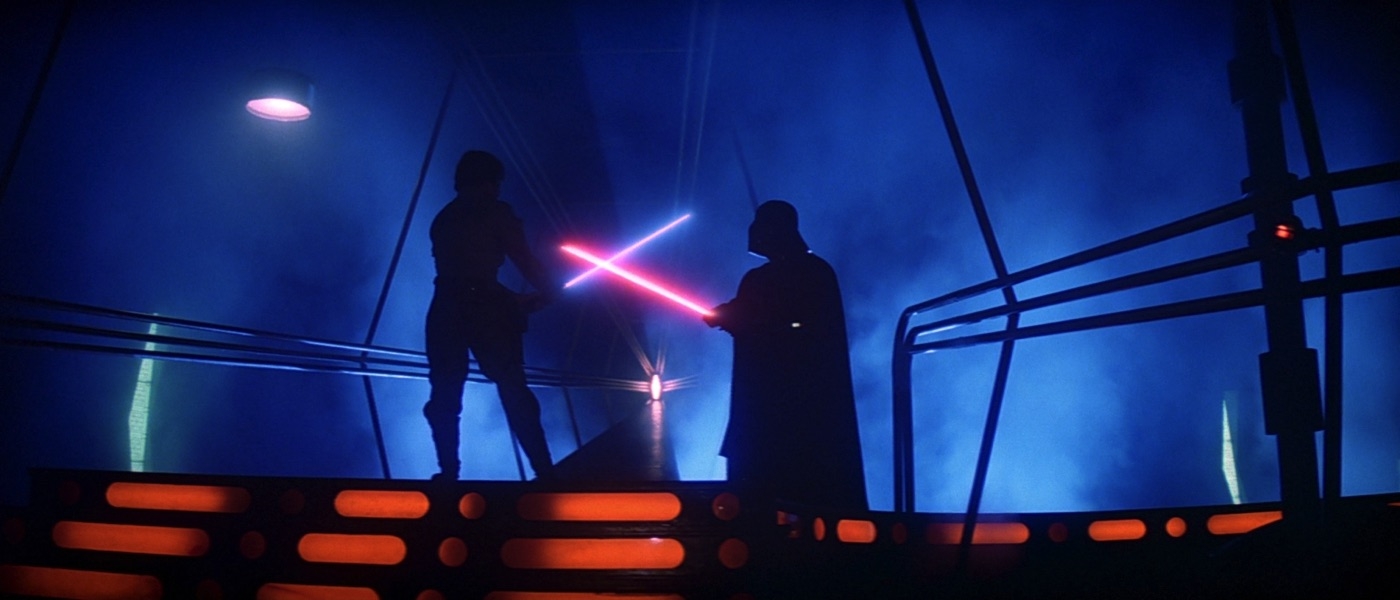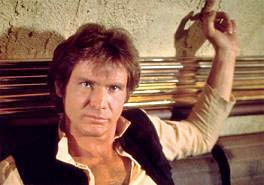In Star Wars: A New Hope (or as people my age call it, “the first Star Wars”), as the Rebellion is preparing its fool’s mission to destroy the Death Star with a one-man fighter, pilot Wedge Antilles represents sensible realists everywhere. He objects, “That’s impossible! Even for a computer.” But the idealist (if whiny) Luke Skywalker responds, “It’s not impossible. I used to bullseye womp rats in my T-16 back home; they’re not much bigger than two meters.” Had the Rebellion listened to Wedge, his objection would have been self-fulfilling: it would have been impossible, because they wouldn’t have even tried the plan.
We hear the same self-fulfilling argument today regarding voting for third-party candidates: we must vote for one of the two major-party candidates because only one of them will win. However, only one of them will win because we all say we must vote for one of these two. In the modern era of American politics, there is nothing treated more dismissively than voting third party. Traditionally, it is one step away from wearing tin-foil hats, hoarding gold, and obsessively debating whether Han shot first. After all, Ron Paul ran as the Libertarian Party candidate in the ‘80’s, and we all know how crazy he is! Even with the major-party candidates almost universally loathed, most voters don’t want to consider anyone else.
Yet there have been cracks in the two-party stranglehold. This year voting third party has become more acceptable, especially among Millennials. In a recent Quinnipiac University Poll, when asked to choose between the top four (instead of top two) presidential candidates, 44% of voters aged 18-34 chose third-party candidates Gary Johnson or Jill Stein. Compare that to voters aged 65+, where only 5% chose either Johnson or Stein. But third-party voting still has a way to go to overcome being perceived as futile as building an igloo on Tatooine.
These Aren’t the Candidates You’re Voting For
As a libertarian conservative, I’ve most often been told this year that “A vote for a third party is a vote for Hillary.” But is it? This argument presupposes that my vote previously belonged to the Republican candidate, and I’m harming that candidate if I vote third party. If this were true, then you could argue that my vote for a third party does help Hillary – although it still would not be a vote for her. However, each voter enters an election cycle as a blank slate; no one’s vote should be presupposed. Each person votes for the candidate he or she thinks is best based on a number of factors: position on the issues, likelihood to win, temperament, etc. No one is required to vote for a specific party’s candidate. If the Republican Party puts forth a candidate I believe is comparable to Jabba the Hut (hypothetically speaking, of course), then I simply won’t vote for him (or her). The onus is on the party to nominate candidates that satisfy the most voters. Thus, my vote is always a vote for one person: the candidate I select on my ballot.
Another argument of the two-party establishment, which holds onto power as tightly as Emperor Palpatine, is to convince voters that a vote for anyone other than one of two choices is “wasted.” After all, apologists for the two-party system argue that third-party candidates haven’t won in over a century, so voting third party is voting for a loser. Of course, everyone who voted for Gore or Kerry or McCain or Romney also voted for losers, so those votes were “wasted” too, I guess. Over at the Foundation for Economic Freedom, Stephen Weese explains mathematically why third-party votes are not wasted votes. The tl;dr: your one vote for a major-party candidate makes no real dent in their chances of winning or losing, but your one vote for a third-party candidate can impact elections long-term.
Americans today have trouble imagining any system other than the fully armed and operational Republican/Democrat duopoly we have now. However, our history has shown that political parties can come and go, and that with enough societal pressure, a new party can rise from the ashes of another. (Trigger warning: history lesson). In the early 19th century, the Whig Party was one of the major political parties in America, with four different presidents coming from its ranks. However, the issue of slavery tore the party apart, with most of its supporters in the North moving to the Republican Party, which soon had its own candidate elected president, himself a former member of the Whig Party. He was a little-known man named Abraham Lincoln.
Today, there are no Whig Party loyalists, for loyalty to a party should only exist as long as that party continues to represent its members’ beliefs and principles. With the Democratic Party running full-on to socialistic paganism, and the Republican Party mixing some weird kind of nationalistic, socialist cocktail (an unfortunate combination), many Americans rightly feel unrepresented.
It’s a Trap!
Perception isn’t the only obstacle for the acceptance of a third party. Donald Trump has been complaining about a “rigged system,” and some of his arguments are legitimate. The recent Wikileaks dump has exposed what most conservatives have lamented for decades: the media and the Democratic Party are cozier than Princess Amidala and Anakin Skywalker on Naboo. However, the true rigging isn’t a media in bed with the Democratic Party, but a system which excludes any but the two major parties from serious political consideration.
Two barriers in particular work against mainstream acceptance of third parties: pollsters and the Commission on Presidential Debates. In that Quinnipiac Poll referenced earlier, I noted that 44% of young voters chose either Johnson or Stein when asked to choose between the top four candidates. However, that was the fourth question in the poll. In the first, top-line question, voters were asked to choose among Trump, Clinton, and “someone else.” When asked in this way, only 3% of young voters chose “someone else.” When offered specific alternative candidates instead of a nebulous “someone else,” Clinton’s support among young voters plummeted from 55% to 31% and Trump’s dropped from 34% to 25%. However, what will voters actually see on their ballots come November? Will it just be two names and “someone else,” or will it be all the actual qualified candidates? By beginning the polls with a two-way question, pollsters stack the deck against third parties. The media narrative, furthermore, is only based on that first, top-line question. Why not simply include all qualified candidates in the first question, since that reflects the actual choices the voter will face at the ballot box?
Flawed polling is also the foundation of the other large obstacle to third-party acceptance: the Commission on Presidential Debates. If a presidential candidate doesn’t make the debates, he or she has no chance to reach a large portion of the voting populace, making his or her likelihood of victory less than C-3PO’s 3,700-to-1 odds of a ship navigating an asteroid field. In the most successful third-party runs in the past few decades – Ross Perot and John Anderson –both candidates participated in debates with the major-party candidates, raising their profile. However, this bipartisan (read: comprised of only Democrats and Republicans) commission in recent years has made the barrier to entry a staggering 15% in national polls. With rigged polling, this threshold is almost impossible to overcome, even for the most popular third-party candidates.
Why are third parties as unwelcome by the debate commission as Anakin Skywalker at a Jedi youngling birthday party? One argument is that an overloaded debate floor will make it difficult for viewers to hear in-depth from the candidates. And any who watched the early Republican debates, which were as crowded (and sometimes as weird) as the Imperial Galactic Senate forum, can sympathize with this argument. I don’t really want to give Vermin Supreme a platform along with the other candidates. But we are not talking about adding dozens of candidates, just a few, such as Gary Johnson and Jill Stein this year. Mathematical possibility could provide a simple threshold. If a candidate is on enough state ballots to win – potentially – 270 electoral votes, then he or she can be on the debate stage. At most, we might have 2-4 additional candidates on stage – candidates that could give answers outside the narrowband covered by the Democrats and Republicans today.
A New Hope
Most rational people agree that the two major-party candidates this year – Hillary Clinton, serial liar and the personification of corruption, and Donald Trump, reality TV groper – do not satisfy a large portion of the electorate. Even many who will be voting for one of them would like a better choice. Yet they will continue to pull the lever or drop the chad for the Democrat or Republican, but this limited thinking is precisely what led to these terrible choices. As long as America is resigned to a two-party system, the Republicans and Democrats will be able to keep trotting out Larry, Curley, and Jar Jar every four years knowing that, every few elections, they’ll win. Our only solution might be to break out of the Democrat/Republican duopoly and look to third parties to represent a new way forward.
Americans need to think long term: not just who will be president for the next four years, but what will be our choices for the next four decades. If we continue to dismiss third parties as the domain of crackpots and idealists, we will continue to be given a fool’s choice in every national election. Giving more legitimate options to Americans can only be a good thing: it limits the power of the existing political apparatchiks, forcing them to consider ideas that are outside the narrow band of Democrat/Republican solutions. This year, if you don’t like one of the two major-party candidates (and you know you don’t), don’t vote for them – you don’t owe anyone your vote. Vote for a third-party candidate instead. As Luke Skywalker said, it’s not impossible. And after the election, work to build up and support the third party you believe in. Give Americans more options for future elections; the fate of the Republic may depend on it.
All images courtesy Lucasfilm.





